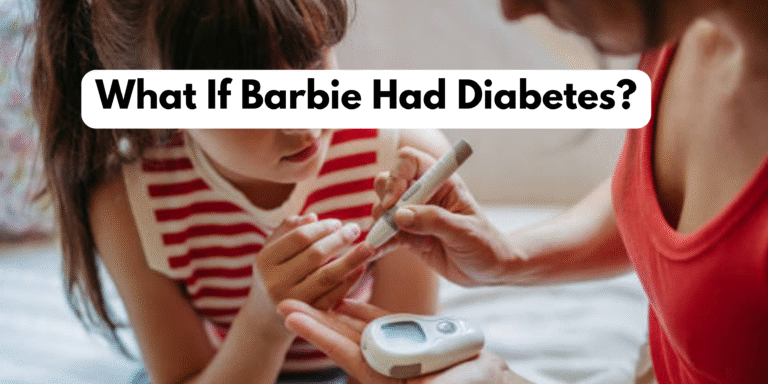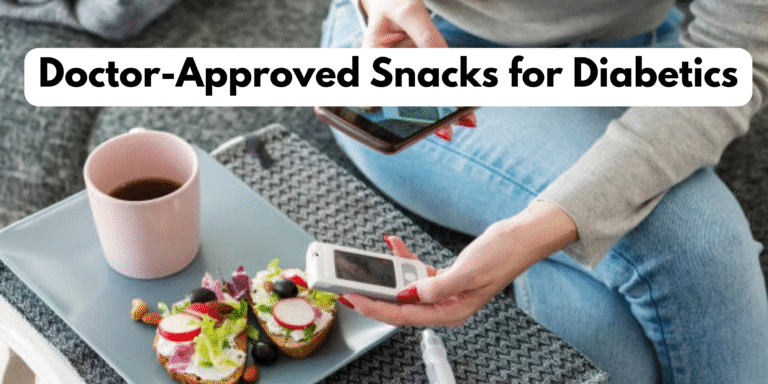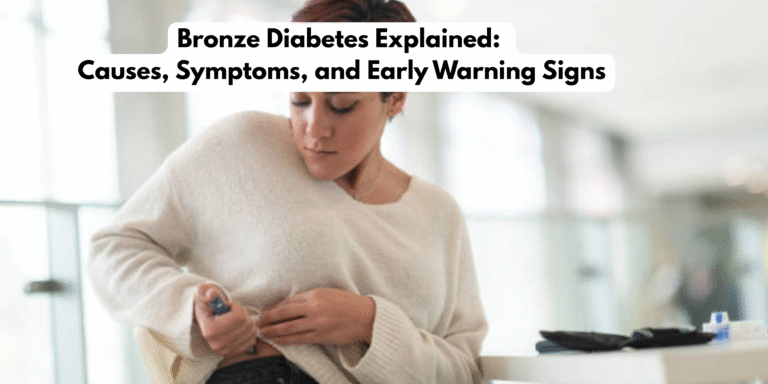What Is Bronze Diabetes?
Bronze Diabetes Explained: Causes, Symptoms, and Early Warning Signs
If your skin suddenly takes on a bronze or grayish glow without much sun exposure, it might seem like a natural tan , but in some cases, it’s actually your body sending an urgent health message. That mysterious change in color could be a sign of bronze diabetes, a condition that combines iron overload with diabetes in a complex mix.
While the name sounds rare and old-fashioned, bronze diabetes is very real and understanding it can be life-changing. Let’s explore what it is, how it develops, and how to identify it before it causes serious harm.
What Is Bronze Diabetes?
Bronze diabetes is a medical term used to describe diabetes caused by hemochromatosis, a condition where your body absorbs and stores too much iron. Over time, this iron accumulates in vital organs, including the liver, pancreas, heart, and skin, damaging them and impairing their function.
The “bronze” part of the name refers to the dark, metallic skin tone some people develop as iron deposits affect pigmentation. The “diabetes” part occurs because iron overload damages the pancreas, the organ responsible for producing insulin, leading to high blood sugar.
So, in short, bronze diabetes happens when:
Iron builds up → pancreas gets damaged → insulin levels drop → blood sugar spikes.
According to the Cleveland Clinic, hereditary hemochromatosis (the most common cause of bronze diabetes) affects about 1 in 200–300 people of Northern European descent. If left untreated, it can lead to serious complications like diabetes, heart disease, and liver failure.
Source: Cleveland Clinic – Hemochromatosis Overview
How Does Bronze Diabetes Develop?
To understand bronze diabetes, you first need to understand iron overload. Normally, your body tightly controls iron absorption , taking in just what it needs to make blood and support cells. But in hereditary hemochromatosis, a genetic mutation in the HFE gene causes your intestines to absorb too much iron from food.
Over time, this excess iron builds up in your tissues and organs. Think of it like rust building up in a machine , slowly damaging the parts that keep things running smoothly.
According to the National Institutes of Health (NIH), this process can take years. Symptoms may not appear until middle age, by which time organ damage , including diabetes ,may already be underway.
Source: NIH – Hemochromatosis Information

The Genetics Behind Bronze Diabetes
Most cases of hemochromatosis, also known as bronze diabetes, are caused by inherited mutations in the HFE gene , particularly the C282Y and H63D variants. You need to inherit two copies (one from each parent) to be at a higher risk of developing hemochromatosis.
However, genetics isn’t the whole story. Factors like alcohol use, iron supplements, infections, and other metabolic disorders can make symptoms worse or appear earlier.
Research from Mayo Clinic shows that men are more likely to develop symptoms earlier than women, because menstruation helps naturally remove excess iron from the body. After menopause, though, women’s risk rises sharply.
Source: Mayo Clinic – Hemochromatosis Symptoms and Causes
Early Warning Signs of Bronze Diabetes
Bronze diabetes develops slowly, often creeping up without obvious signs. That’s why it’s sometimes referred to as a “silent” condition. But your body usually gives subtle clues before things get serious.
Here are the most common early symptoms to watch for:
- Persistent fatigue or low energy
- Joint pain (especially in the hands and knees)
- Loss of libido or irregular periods
- Unexplained weight loss
- Mild abdominal discomfort
- Darkened skin — bronze, gray, or metallic tone
As it progresses, symptoms can include:
- Liver problems (enlargement or cirrhosis)
- Heart rhythm issues
- Diabetes symptoms (increased thirst, hunger, and urination)
- Swelling in the abdomen or legs
- Mood changes or depression
Source: Merck Manual – Iron Overload Disorders
Why the Skin Turns Bronze
One of the most distinct features of bronze diabetes is its effect on skin tone. This bronzing occurs for two main reasons:
- Iron deposits accumulate in the skin.
- Melanin production increases due to chronic iron exposure.
These combined effects result in a bronze or grayish discoloration, most noticeable on sun-exposed areas such as the face, neck, and forearms.
The British Skin Foundation notes that the color change is harmless on its own but can be an early sign of more severe iron-related issues, especially when accompanied by fatigue or joint pain.
Source: British Skin Foundation – Skin and Genetic Haemochromatosis
How Bronze Diabetes Is Diagnosed
If you suspect bronze diabetes, your doctor will start with a few simple blood tests:
- Serum ferritin test: Checks how much iron is stored in your body.
- Transferrin saturation test: Measures the amount of iron bound to transferrin, a blood protein.
- Genetic testing: Identifies HFE mutations.
- Liver function tests: Detect early signs of liver damage.
- Blood glucose tests: Check for diabetes.
In more advanced cases, imaging techniques (such as MRI) or a liver biopsy may be used to measure iron directly in the tissue.
Source: MedlinePlus – Hemochromatosis Tests
Treatment Options for Bronze Diabetes
The primary goal of treatment is to remove excess iron before it causes further damage to the organs. Fortunately, treatments are very effective when caught early.
- Therapeutic Phlebotomy (Blood Removal)
This is the most common treatment. It’s similar to donating blood , removing a small amount regularly helps lower iron levels. Most patients begin with weekly sessions, then transition to maintenance sessions every few months.
- Chelation Therapy
When phlebotomy isn’t possible, doctors may prescribe medications like deferasirox or deferoxamine, which bind to iron and help flush it out through urine or stool.
- Dietary Adjustments
Avoiding iron-rich foods, alcohol, and vitamin C supplements (which boost iron absorption) helps maintain balance.
- Diabetes Management
If diabetes has already developed, blood sugar control through medication, diet, and exercise becomes part of the treatment plan.
According to the National Center for Biotechnology Information (NCBI), patients who begin therapy before severe organ damage can lead normal, healthy lives.
Source: NCBI – Hemochromatosis and Management
Foods to Avoid (and Enjoy)
A diet doesn’t cause type 2 diabetes, but it can help manage it. Here’s a breakdown of what to limit and what to load up on:
Limit These:
- Red meat (especially liver and beef)
- Iron-fortified cereals
- Alcohol (especially beer and wine)
- Vitamin C supplements
- Raw shellfish can carry bacteria harmful to people with iron overload.
Enjoy These:
- Fresh fruits and veggies
- Whole grains and legumes
- Lean poultry or fish
- Coffee and tea (they reduce iron absorption naturally)
Source: Harvard Health Publishing – Managing Iron Overload
Can Bronze Diabetes Be Prevented?
You can’t change your genes, but you can reduce your risk and catch it early:
- Ask your doctor about genetic testing if it is a concern in your family.
- Avoid unnecessary iron or vitamin C supplements.
- Limit alcohol to protect your liver.
- Get regular blood tests if you experience persistent fatigue or notice any unusual changes in your skin.
Early detection can prevent diabetes, heart issues, and liver damage entirely.
Source: CDC – Genetic Hemochromatosis Prevention
When to See a Doctor
Seek medical advice if you notice:
- Unexplained darkening of the skin
- Persistent fatigue or weakness
- Joint pain or stiffness
- Family history of hemochromatosis
- Signs of diabetes (increased thirst or urination)
A quick blood test can tell you if your iron levels are out of balance — and early action can save your organs from long-term damage.
Final Thoughts: Listen to Your Skin
Your skin is more than just a reflection of beauty , it’s a messenger for what’s happening inside. Bronze diabetes is your body’s way of saying it’s struggling with too much iron, and ignoring that warning can lead to diabetes and organ failure.
However, the good news is that it’s preventable and treatable if detected early. With regular check-ups, smart eating, and awareness of the warning signs, you can prevent type 2 diabetes before it starts — and keep your glow healthy, not hazardous.





